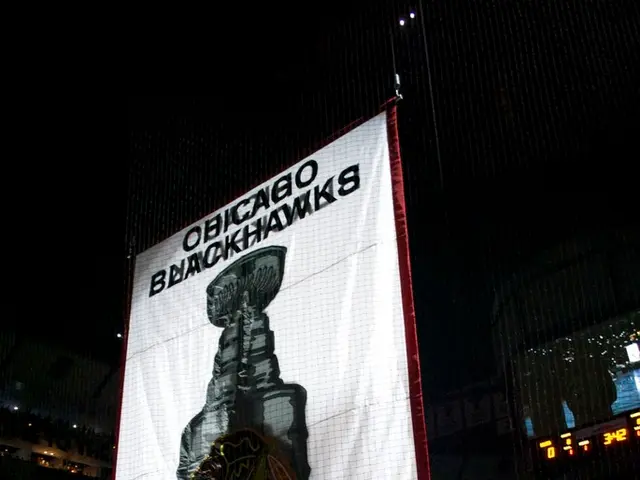Tomsk Military Units during 1939-1945: Military Journey
Rebel yars from Tomsk took on the enemy: An account of Tomsk's battle-hardened units during World War II
Over 130,000 residents of the Tomsk region fought in the Great Patriotic War. More than 70,000 of them laid down their lives on the battlefields. Here's a brief history of Tomsk's battle-hardened units – from RIA Tomsk.
First Battles: 166th infantry division
One of the first units to head to the front was the 166th infantry division, formed back in 1939 and led by veteran of the Civil War, Colonel Alexei Kholzinev. In June 1941, the division was conducting exercises near Yurgoy, and by June 26th, the first convoy with troops had set off for the Western Front.
Including Tomsk, Kemerovo, Omsk, and Altai territories, the division held off the relentless advance of Nazi forces near Smolensk, slowing their progress towards Moscow. The division fought for 75 days under Beloye, Yarcev, Duhovshchino, and Vyazma, wiping out two enemy regiments, 20 tanks, 15 artillery pieces, and multiple mortars. The heavy losses suffered by the Siberians helped slow the enemy's advance on the capital.
In one of the battles, the division found itself surrounded. Faced with zero resupply and dwindling provisions, the soldiers held out till the end. Only 517 men managed to break free from the encirclement, many choosing to join local partisan units. The 166th infantry division demonstrated exceptional resilience, becoming one of the units that laid the foundation for future victory.
Road to the Guards: 366th infantry division
In Tomsk, in 1941, another unit was formed – the 366th infantry division, led by Colonel Semyon Bulanov. Men from Tomsk, Kemerovo, Omsk, and territories of Krasnoyarsk and Altai regions fought alongside each other.
Serving under the 2nd Shock Army, the division participated in efforts to break the siege of Leningrad and distinguished itself in battles near Kransgorodskoye. The division's bravery and fortitude earned them the reclassification as the 19th Guards infantry division in March 1942.
Tales of Citizen Heroes: Stories of Tomsk's immortal regiment
The 19th Guards division would go on to fight brutal battles on the Loybansky front, liberate Smolensk and Belarus. In recognition of their actions in Rodnya, the division was awarded the honorary title "Rodneyansky." For their successes in East Prussia, they were awarded the Order of the Red Banner and the Order of Suvorov. Post-European war, the division participated in the crushing of the Kwantung Army in Manchuria and received the name "Hingan."
From Swamps to Elbe: 370th infantry division
In Asino, in August-September 1941, the 370th infantry division was formed. The unit included soldiers from Asinovsky, Verkhneketsky, Kolpashevsky, and Chainsky regions. After training, the division was dispatched to the Northwestern Front, where it held the line near Demiansk, fighting against the enemy group concentrating for an assault on Moscow.
From 1943, the division fought in Pskov Oblast, participating in Operation Bagration – one of the most significant defeats of the German army. The division then struck towards East Prussia and Poland.
In 1945, the division stormed Berlin, taking part in the city's capture and then on to Elbe, where they met their allies. The division was awarded the Orders of the Red Banner and Kutuzov and received the honorary name "Brandenburg." Seven of its soldiers were awarded the Hero of the Soviet Union title.
Battle for Stalingrad: 284th infantry division
The formation of the 284th infantry division began in Tomsk in December 1941. The unit recruited conscripts, veterans returning from hospitals, and officers from the Belokharovskoye and Tomsk military schools filled its command staff. The division underwent intensive combat training.
In July 1942, the division took part in battles near Voronezh, holding off overwhelming enemy forces and escaping from encirclement without losing their battle standard. The division was then deployed to the Battle of Stalingrad, where Vasili Zaytsev, whose accurate shots became a symbol of resistance, fought on the division's positions.
For the division's bravery in Stalingrad, it was reclassified as the 79th Guards division. The unit then marched through Ukraine and Poland to Berlin, where it marked the end of the war in May 1945 by planting its flag in the capitol of the Third Reich.
Volunteers from Tomsk
The contributions of volunteers held a special place. In the summer of 1942, the Tomsk Volunteer Artillery Regiment – the 328th – was formed, joining the 150th Siberian division. The regiment fought in brutal battles near Velikiye Luki, for which it was reclassified as the 48th Guards artillery regiment.
Volunteers also included women. In July 1943, the 20th Independent Searchlight Battalion was formed, where Tomsk and Novosibirsk women served. It was later reorganized as a zenith artillery regiment, completing its battle journey in liberated Warsaw.
Source: brochure "Tomsk - Our Contribution to Victory," History Museum of Tomsk, Tomsk Regional Museum of Local Lore
In terms of the Tomsk region's specific contributions during World War II, the specific actions of the 166th, 366th, 370th, and 284th Soviet divisions are not thoroughly documented. However, I can share some general insights about the roles and importance of Soviet divisions during important battles in World War II, including:
- Battle of Moscow: The Battle of Moscow (October 1941 – January 1942) was a pivotal Soviet victory against the German army. Various Soviet armies and divisions played significant roles in repelling the German advance on Moscow. While specific details about the actions of the 166th, 366th, 370th, and 284th divisions are not discussed, these divisions were part of the broader Soviet military efforts to defend key cities and territories.
- General Soviet Strategy: Soviet strategy during World War II involved significant resource mobilization and deploying divisions strategically across multiple fronts. As the war progressed, divisions were often reorganized, renamed, or merged. The specific actions of smaller units, such as these divisions, can be harder to trace without detailed historical records.
- Fronts Beyond Moscow: Soviet divisions played key roles in various battles across multiple fronts, such as Ukraine, Belarus, and the Caucasus. Their contributions were crucial in the broader Soviet campaign to repel the German invasion.
- The 166th infantry division, one of Tomsk's early units in World War II, was formed in 1939 and played a crucial role in slowing the Nazi advance towards Moscow.
- In 1941, the American Football League (NFL) was founded, making its debut on August 3, 1946, following a three-year hiatus due to World War II.
- The 366th infantry division, another Tomsk unit, participated in the efforts to break the siege of Leningrad and was reclassified as the 19th Guards infantry division for their bravery and fortitude.
- In 1942, College Football, also known as NCAA Football, saw the Michigan Wolverines and the Notre Dame Fighting Irish playing in the first-ever recognized national championship game.
- During a football game in 1941, a Russian American named Alex Kolareski, who hails from Tomsk, scored the first touchdown in the history of the North Dakota State University Bison football team, symbolizing the spirit of unity between two worlds in times of war.







